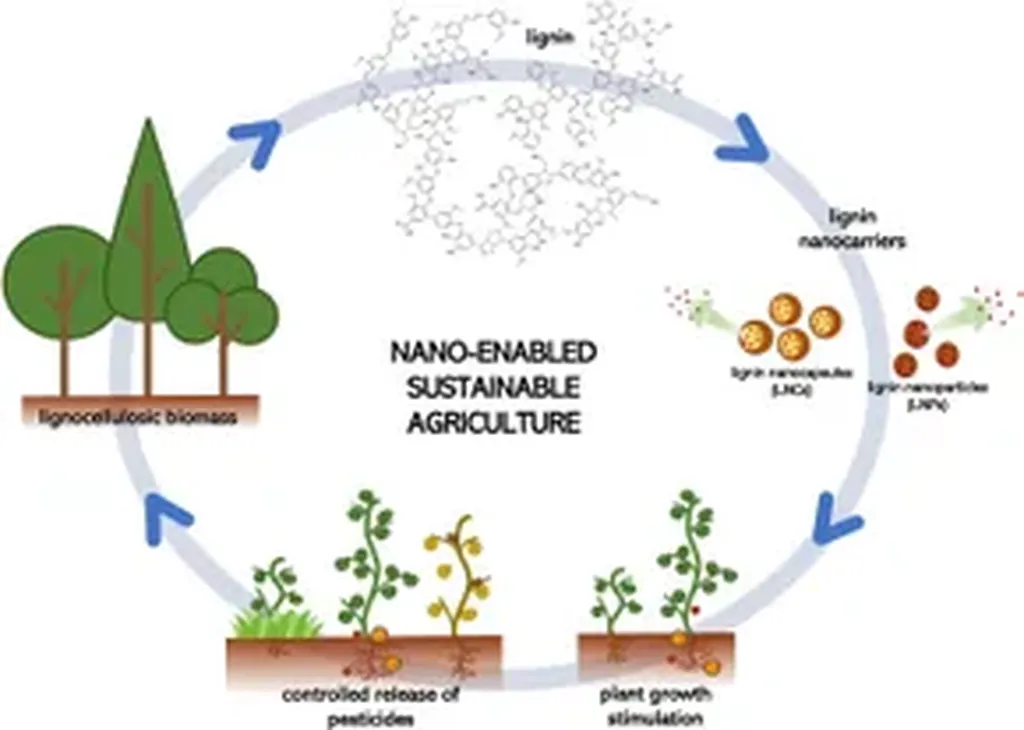In a groundbreaking study published in *Industrial Crops and Products*, researchers have unveiled a novel approach to synthesizing zinc oxide nanoflowers (ZnONFs) using lignin, a byproduct of the paper and pulp industry. This eco-friendly and cost-effective method could revolutionize the agriculture and medical sectors by offering sustainable solutions for antimicrobial, antibiofilm, and anticancer applications.
The research, led by Tianyu Hou from the School of Chemistry and Chemical Engineering at North University of China, focuses on the unique properties of lignin-fabricated zinc oxide (L-ZnONFs). These nanoflowers exhibit remarkable physical and chemical characteristics, making them highly effective in various applications. “The use of lignin as a reducing and capping agent not only makes the synthesis process greener but also enhances the biocompatibility of the nanoparticles,” Hou explained.
One of the most significant findings of the study is the potent antimicrobial activity of L-ZnONFs. The nanoparticles demonstrated a higher efficacy against Gram-negative bacteria such as E. coli, K. pneumoniae, and S. typhi compared to Gram-positive bacteria like C. diphtheriae. This could be a game-changer in the agricultural sector, where bacterial infections can devastate crops and livestock. “The potential to use these nanoparticles as sustainable agrochemicals is immense,” Hou noted. “They could help in controlling bacterial infections in plants, thereby reducing the need for harmful chemical pesticides.”
Moreover, the L-ZnONFs showed significant antibiofilm effects in C. diphtheriae, which is crucial for preventing biofilm-related infections in both medical and agricultural settings. Biofilms are a major challenge in agriculture as they can protect harmful bacteria from pesticides and antibiotics, leading to persistent infections.
The study also explored the anticancer potential of L-ZnONFs. Cell viability tests on HepG2 cells revealed a dose-dependent decrease in cell viability, with an IC50 value of 135 ± 6.75 μg/mL. Fluorescence-Activated Cell Sorting (FACS) analyses using Annexin V confirmed that L-ZnONFs induced apoptosis in HepG2 cells. This opens up new avenues for developing targeted cancer therapies with fewer side effects.
In addition to their antimicrobial and anticancer properties, the researchers assessed the impact of L-ZnONFs on seed germination and plant growth. Using Raphanus sativus (radish) as a model, they found that the nanoparticles did not adversely affect seed germination, suggesting their potential as safe and effective agrochemicals.
The implications of this research are far-reaching. The use of lignin, an abundant and underutilized resource, to synthesize nanoparticles offers a sustainable and cost-effective solution for various industries. “This study highlights the potential of lignin-based nanoparticles in agriculture and medicine,” Hou said. “It paves the way for further research into the applications of these nanoparticles in other areas, such as water treatment and food packaging.”
As the world grapples with the challenges of sustainability and environmental conservation, innovations like lignin-fabricated zinc oxide nanoflowers offer a glimmer of hope. They represent a step towards a future where technology and nature work hand in hand to create sustainable solutions for global problems.

